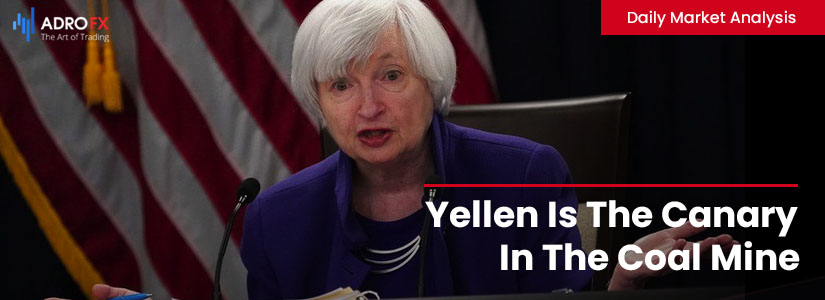Yellen Is The Canary In The Coal Mine | Daily Market Analysis

Key events:
USA - CB Consumer Confidence (Oct)
Decreasing liquidity levels in the treasury market are beginning to worry the U.S. Treasury Department. Back on October 14, U.S. Treasury Secretary Yellen announced the possible start of redemption of some of its old debt obligations.
The news, as we see, is not new. She spoke 11 days ago. But in reality, she planned to start consultations with primary dealers on the market of the American government debt on the possibility of buying some debts from the market to increase its liquidity yesterday – October 24.
Frankly, the actions of the U.S. Treasury are at odds with the Fed's tough policy. The Fed is selling UST off its balance sheet as part of QT. The U.S. Treasury, on the other hand, is thinking about buying back debt.
Liquidity on these instruments is incredibly important. If the liquidity of U.S. government debt declines, it will be a real shock to world markets. Obviously, it's no coincidence that the much-experienced U.S. Treasury secretary sounded the alarm.
Apparently, the recent events in Great Britain, more precisely, the forced intervention of the Bank of England, may prompt the U.S. Treasury to start thinking about revising its policy.
What about the debt market?
On the one hand, yields of American ten-year notes decreased a bit over the last few days. Rather, purely symbolically, from 4.3% to 4.17%. So... nothing so far. And it's hard for UST to start growing in price with such menacing and decisive rhetoric from the depths of the Fed.

What's more: despite the dovish statements from the Treasury, the inversion of the yield curve persists. Thus, the yield on the U.S. ten-years is now 4.17% and the two-year is 4.47%.
Massive short bond sales point to market concerns about the risks of a slowing economy.
Is a recession imminent?
The U.S. Mortgage Bankers Association predicts that the U.S. economy may enter a recession in 2023. According to the NABE survey, the country is already in recession or may soon plunge into it. So who can we believe? The facts.
The PMI for manufacturing fell to 49.9 from 52 in September, and the PMI for services fell to 46.6 from 49.3.

The slowdown in business activity is obvious. Now we just have to wait for the cooling in the labor market. That will be the most serious indicator.
The deterioration of the economic component is also evidenced by the decline in maritime spending. According to Descartes Datamyne, U.S. container imports were down 11% (Y/Y) and 12.4% (M/M) in September. The average shipping price for a container from Asia to the U.S. West Coast dropped 84% (Y/Y) to $2,720.
We remember very well how much container prices soared on the route from Shanghai to the U.S. back in 2021, for example.
Why is all this information extremely important to us? In case the U.S. Treasury actually starts to take action to buy debts from the market (although frankly, it cannot do it without the Fed and with its own hands), it could lead to a rather powerful rally in the markets. Let's be patient.









